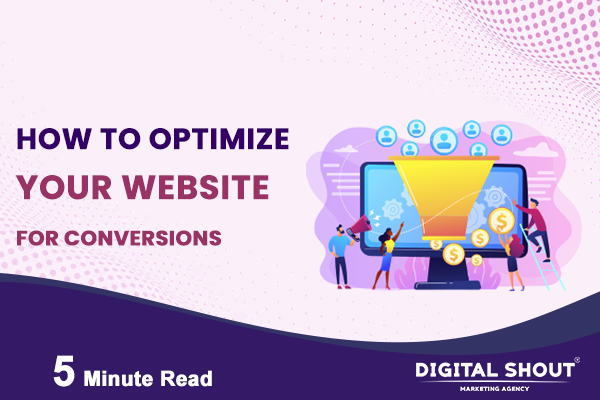Are you looking to get the most out of your website? You’re not alone. Every business owner wants their website to be as successful as possible, and one of the most important metrics for website success is conversion rate. Optimizing your website for conversions can help you get the most out of your website and maximize your return on investment. This blog post will look at some of the best strategies for optimizing your website for conversions. We’ll cover how to design your website for maximum engagement, use content marketing to drive conversions, and track and measure your progress.
The importance of website optimization
Optimizing your website for conversions can ensure visitors are more likely to take the action you want them to take, such as signing up for a newsletter, downloading an ebook, making a purchase, or scheduling a consultation. Also helps to ensure that visitors are engaging with the content on your site and that they have a positive user experience.
Website optimization involves analyzing key performance indicators (KPIs), such as bounce rate, time spent on the page, and click-through rate, and then making changes to your website based on those results. These changes could include everything from adding CTAs (Calls-to-Action) to improving the design of your website to increasing the speed of your pages.
The basics of conversion rate optimization
Conversion rate optimization (CRO) is the process of improving the performance of your website by increasing the number of visitors who take the desired action, such as signing up for a newsletter, making a purchase, or downloading an ebook. To do this effectively, you need to understand the principles behind CRO and how to apply them to your website.
First, it’s important to have a good understanding of your website’s key performance metrics. These will be different for every website but typically include time on page, pageviews per visit, average order value, and conversion rate. These metrics will help you determine where there is room for improvement on your website.
Next, you need to identify which elements of your website might be causing users to leave without taking the desired action. This could include too much clutter or confusing navigation, slow-loading pages, or simply a lack of information about what you offer. Once you’ve identified these elements, you can start to make improvements.
One way to ensure your website is optimized for conversions is to A/B test different versions of your site. This involves creating two versions of the same page and testing them against each other to see which one performs better. This can help you identify the most effective elements of your website and make changes accordingly.
Finally, you need to make sure you’re tracking the results of your optimization efforts. You should keep track of key metrics like conversion rate, bounce rate, and time on the page before and after implementing any changes. This will help you determine whether or not the changes you’ve made positively affect your website’s performance.
By following these basic principles, you can ensure that your website is optimized for conversions and maximize its potential.
The best practices for optimizing your website for conversions
1. Focus on the user experience: Make sure your website is easy to navigate and has a logical structure. Focus on the customer journey and ensure that each page leads the user closer to their goal.
2. Optimize your calls-to-action (CTAs): CTAs should be highly visible and stand out from the rest of the content on your website. Make sure each CTA is relevant to the content it is placed next to.
3. Test different variations: Use A/B testing to try out different versions of your website and its content. This will help you identify which elements are working better for your users and optimize your website accordingly.
4. Keep content fresh: Ensure that your website content is up-to-date, relevant, and engaging. Visitors who come across outdated or irrelevant content may leave your website searching for something more useful.
5. Keep page loading speed in mind: The speed at which page loads can impact your conversions, as visitors may become frustrated if pages take too long to load. Ensure all images, videos, and other media are optimized for fast loading speeds.
6. Track results: Once you’ve changed your website, track your results to assess what’s working. Tracking tools like Google Analytics are very helpful in providing real-time data about how visitors interact with your website.
Conclusion
Optimizing your website for conversions is an important part of digital marketing success. It can help you attract more customers, increase sales, and generate leads. A successful conversion rate optimization strategy requires a comprehensive approach that includes assessing the performance of your website, understanding user behavior, and making changes to improve user experience. To ensure you get the most out of your website optimization efforts, focus on creating an engaging user experience, clear call-to-action, and measuring your results. With the right strategy in place, you can optimize your website for conversions and boost your bottom line.

